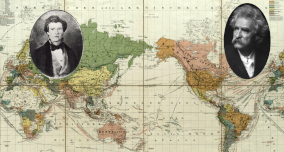The Taungurung people are the traditional owners and inhabitants of the area Seymour now occupies. Specifically, it is the land of the Buthera Balug clan who occupied the area when Europeans first settled the region in the early 1800s.
The Robert Burns Inn was operating there by the end of 1839. In 1841 the Government decided that the new crossing place was the likely spot for a town. Plans were laid before the Executive Council of NSW and Mitchell proposed the name Seymour which was approved on 21 December 1843. The town was named after Lord Seymour, the son of the 11th Duke of Somerset. The Post Office opened on 1 July 1844. The railway arrived in 1872 along with substantial infrastructure to support it, establishing the town as an important rail hub for the Goulburn Valley, the Melbourne–Sydney railway and North Eastern Victoria. It was one of the first Victorian examples of the railway town phenomenon. In the heyday of the railway it employed 400 men and along with their families comprised one-third of the town population, or 1,500 people. In 1871 the Shire of Seymour was established which also included the towns and localities of Avenel, Mangalore, Tallarook, Whiteheads Creek, Trawool, Hilldene and Northwood. It was proclaimed the Rural City of Seymour in 1993. In 1994, the Rural City of Seymour was abolished and incorporated into the Shire of Mitchell.
